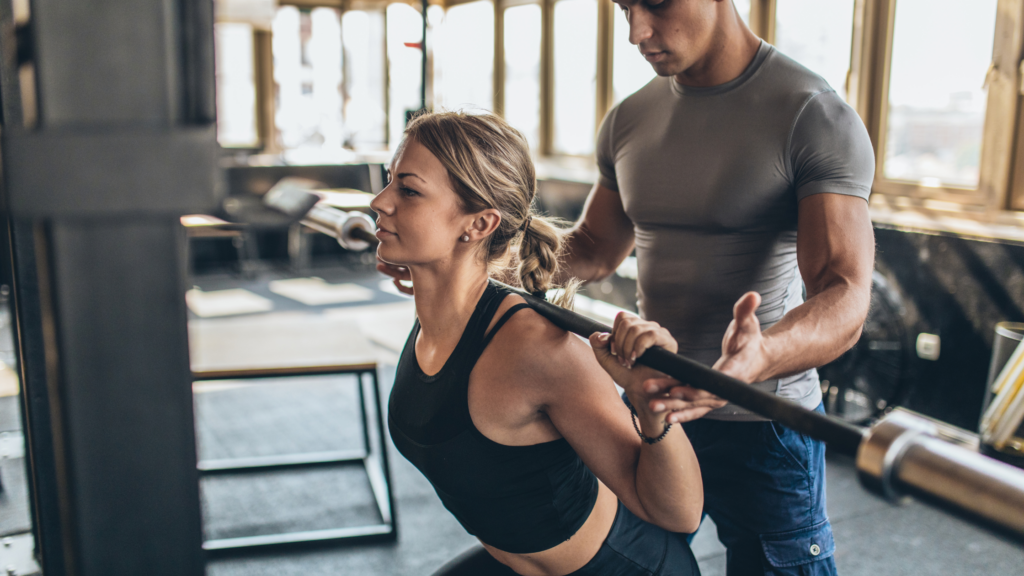Scientific evidence has shown that strength training is the way forward for people looking to lose weight, build muscle, and get a good workout. Everyone should incorporate some type of strength training and weightlifting into their workouts as not only is it an excellent way to lose weight, but it will, as it says, improve strength and flexibility, protect your joints, and support your body the way it needs to. Far from being an easy way to ruin your joints, weight training, when done correctly, is vital and should be a part of your routine.
However, getting started isn’t always as easy as picking up a dumbbell and going for it. Strength training can be intimidating for everyone; research shows that women are disproportionately more likely to avoid free weight sections than men in a gym. Not knowing what you are doing can put you off before lifting anything.
This post will look at ways you can feel more comfortable lifting weights and strength training to help you get the most from your workouts.

Learn The Correct Form
Lifting without paying attention to your form or learning the correct form is a fast-track ticket to accidents and injuries. Many people learn what to do by watching others, and while this can be an excellent place to start, it isn’t foolproof, and the person you are watching might also be doing it wrong too.
If you’re joining a gym to see if there is anyone available to help you learn the correct form when lifting, each exercise will require you to be in a different position to get the most from the exercise and avoid injury. If not, or you’re working from home, finding helpful guides online on performing each exercise you want to try will work in your favor.
And always, always brace your core when lifting. If you don’t know how to, practice at home before you lift any weight. Engaging your core will provide you with balance and stability and protect your lower back from injury.
Lift An Appropriate Weight
So the guy next to you is lifting heavy, and you don’t want to show yourself up by picking up a lightweight dumbbell? This type of thinking will only end up one way, in the ER. Ego lifting or thinking you should lift heavier than you can will result in accidents and injuries, especially if you’re a beginner and aren’t yet familiar with what you are doing.
Start low and get a feel for where you are right now. The weight is irrelevant until you find your flow and learn what you can lift. You need to be able to aim for around 10-12 reps before moving up a weight. So even if you start with 5lb dumbbells and slowly work up, the guy lifting heavy weights in the gym will be pleased you are lifting appropriately, and he won’t have to stop his workout to save you! Everyone needs to start somewhere, so find your starting point and work towards heavier weights.
Learn The Equipment
We’ve all seen videos online of people misusing equipment, but avoiding this will give you a better start and allow you to avoid mistakes, wasted time, and accidents in the gym. Check out YouTube videos on people using different types of equipment and learn what they are for so you can incorporate them into your workout. This applies to gym goers and those building gyms in their own homes, too. Never use something you don’t understand.
Things you need to know include the different types of gym weights, what the rack can be used for, how to add weights to a barbell, what a Smith machine does, and what machines are for legs, arm back, etc. The more you know, the easier it will be to use the equipment, the more confident you will feel, and the more impact your workouts will have.
Breathe
Breathing is vital to performing heavy lifting, in fact, any lifting at all. Beginners can often unintentionally hold their breath when exerting energy, which won’t be helping at all. Knowing how and when to breathe properly through your lift can help you hit your PBs, improve your form, and push your boundaries.
You want to make sure your movements are slow and steady, and you are exhaling on exertion, i.e., when you’re doing the lifting or hard parts. Then, you inhale on the way back to your original position. So, if you are deadlifting, this means exhaling on the lift (the way up) and then inhaling on the way back down. Pay attention to your breathing as you perform the exercises; if you are going lightheaded, you are likely going too fast, so slow things down. Don’t be afraid to really push that breath out when you exert your energy, as this will give you the extra drive you need.
Rest
Rest is important. Resting in between sets and rest days, too. Rest is just as important as exercising as it gives your body time to recover.
In the first instance, rest in between sets gives your body a chance to cool down, relax, and prepare for the next round. Be it a minute or two, stopping after each set means you can push through and get the most from each set without hitting fatigue too early.
Rest days must also be factored into your fitness journey as they allow the body to heal, support your efforts, and prepare your reserves for the next session. At least one day per week should be a rest day. You won’t lose any of your gains if you don’t workout seven days a week.
The start of your exercise journey is important as it builds the foundations you will be putting into place to support your goals. Strength training is a vital aspect of your fitness, and while it can be overwhelming to get started, these tips can help you know what you are doing without making massive mistakes along the way.
Avoid ego lifting, learn the equipment, perfect your form, and watch your body change and develop, thanks to your efforts.
P.S. This post contains affiliate links.

